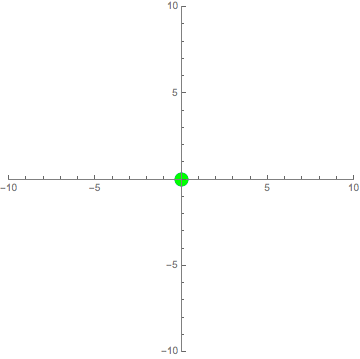Suppose there are several walkers moving randomly on $\mathbb{Z}^2$, each taking a $(\pm 1,\pm 1)$ step at each time unit. Whenever two walkers move to the same point, they annihilate one another. This deletion always occurs in pairs, so if $3$ walkers move to the same point, $2$ are deleted and $1$ remains, whereas if $4$ move to one point, all $4$ are deleted.
At each time step, a new walker is created at the origin if it is not occupied. If it is occupied, the new walker annihilates that origin occupier, and no new walker is created at that time step.

After $n=50$ steps, $10$ walkers remain. Green: newly created. Red: pair annihilation.
Q1. If the process is run from time $0$ to time $n$, and from then on no more new walkers are created at the origin but the simulation otherwise continues, how many walkers are expected to exist as $t \to \infty$?
I believe the answer is $0$, essentially because of Polya's recurrence theorem applied to pairs of walkers.
Q2. If the process is run forever, continuing to create new walkers at the origin if unoccupied, what is the expected number of remaining walkers as $t \to \infty$? How does this number grow (or shrink) with respect to $t$?
Here I have little intuition, and would appreciate an analysis.
